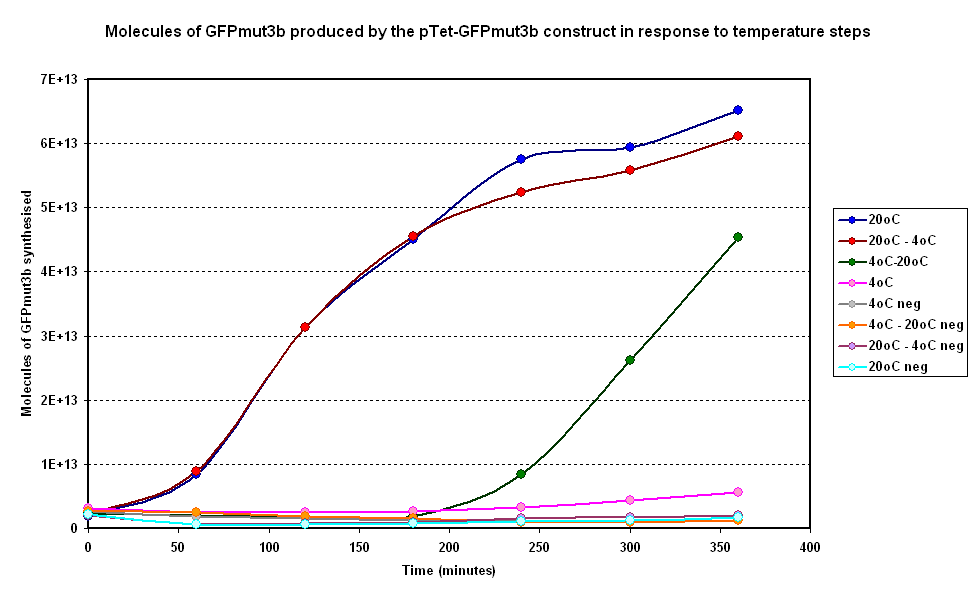Imperial/Wet Lab/Results/CBD2.3
From 2007.igem.org
m (→Discussion) |
m |
||
| Line 1: | Line 1: | ||
| - | + | ||
{{Template: IC07navmenu}} | {{Template: IC07navmenu}} | ||
| + | <br clear="all"> | ||
__NOTOC__ | __NOTOC__ | ||
Revision as of 02:25, 27 October 2007

In vitro Testing of pTet-GFPmut3b Construct for constant and step temperatures
Aims
To determine how the system (pTet-GFPmut3b) responds to a step increase or a step decrease in temperature, compared to a constant temperture, in vitro.
Materials and Methods
Link to the Protocols page
Results
Controls:
- Negative control - empty vector (pTet promoter) with the cell extract
Constants:
- Temperature - 4°C and 20°C
- Total Volume - 60µl
Raw Data:
Discussion
The 'step' samples were moved from their original temperature to the other 180mins after the start of the experiment. As it can be seen from the results above, the temperature step has a very rapid affect on the fluorescence of the DNA construct.
Both samples at 4°C have similar number of molecules of GFPmut3b produced until 180mins. After the sample is moved to 20°C, the GFPmut3b molecules produced increases to a very high value.
Moving the sample at 20°C to 4° decreases the amount of fluorescent protein synthesised by a little amount. This is what was expected as the pTet-GFPmut3b construct showed linear relationship with temperature in the earlier experiments.
Conclusion
It can be concluded from the results that the pTet-GFPmut3b construct is sensitive to a step increase and step decrease in the temperature.
